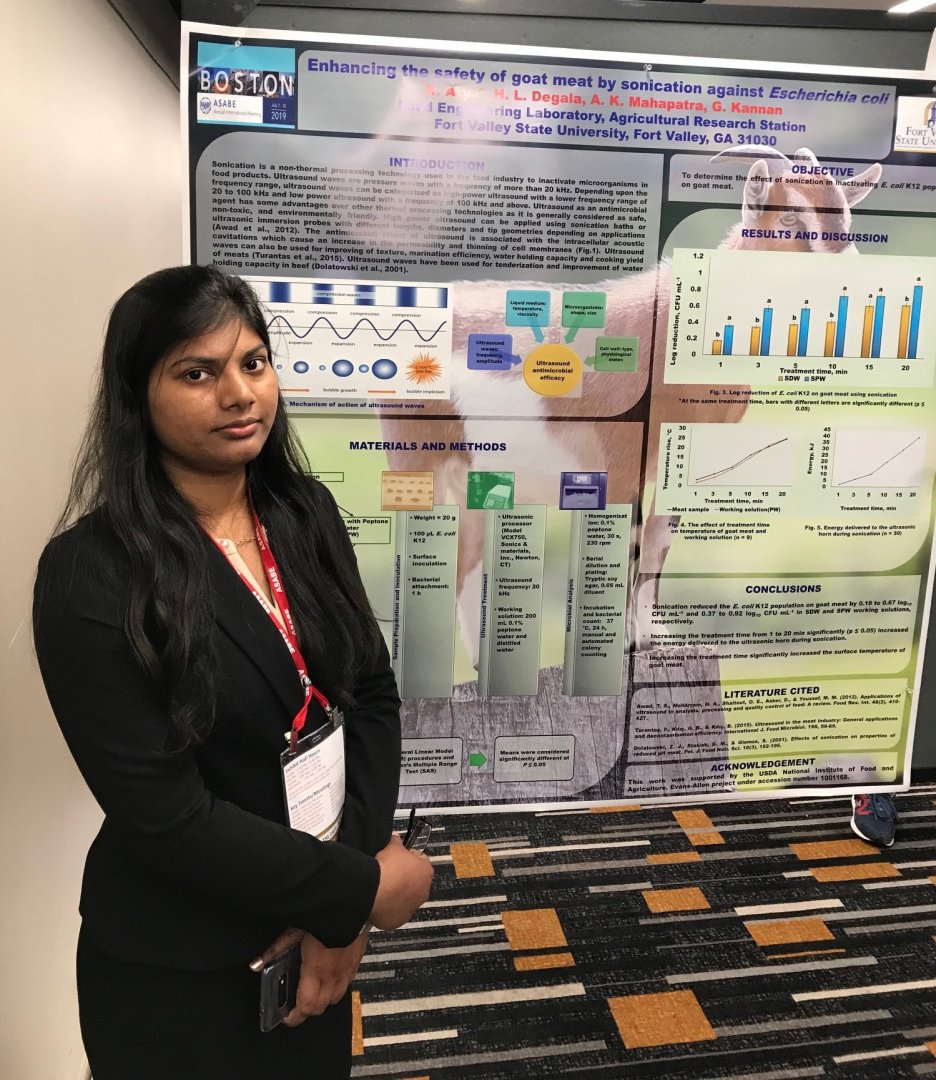News
A new way to shake up harmful bacteria
Posted on Dec 05, 2019
Dr. Ajit Mahapatra, a Fort Valley State University associate professor of food engineering, uses a sonicator to destroy bacteria in goat meat.
Food industries have widely used conventional chlorine wash to kill bacteria on meat surfaces. However, the adverse effect of this method on the quality of the meat has shifted researchers’ focus toward alternative processing methods.
For that reason, an experimental group led by Dr. Ajit Mahapatra, a Fort Valley State University associate professor of food engineering, discovered that sonication can kill the E. coli (Escherichia coli) K12 strain in goat meat.
Mahapatra described that the human ear can recognize frequencies between 20 and 20,000 hertz (cycles per second), but humans cannot scream louder than 3,000 hertz. “All sounds above 20,000 hertz are known as ultrasounds,” he explained. “Sonication is an alternative technology that uses ultrasound waves of frequency 20,000 hertz or greater to kill bacteria in food.” He said a high-frequency sound wave’s energy (vibration) is capable of shaking apart bacterial cells like an opera singer shattering wine glasses.
To test this alternative technique, the FVSU expert and his team used a sonicator to kill E. coli in goat meat. Their two-year experimental process involved treating goat meat samples containing E. coli with sonication (20,000 hertz) for one, three, five, 10, 15 and 20 minutes. They used peptone water or distilled water as a contact medium between the ultrasound source and E. coli. This process does not affect the texture of the meat.
“Our results indicated that sonication was effective in killing 88 percent of E. coli in goat meat within 20 minutes,” Mahapatra said. At one minute, sonication only exterminated 33 percent of the bacteria. This experiment marks the first time use of sonication to kill E. coli in goat meat.
“Our experiments demonstrate that sonication is a potentially safe and effective way to kill bacteria in food products. However, the efficiency of sonication is dependent on treatment conditions, bacterial characteristics and environmental factors,” Mahapatra noted.
To advance his research, the associate professor plans to explore using sonication to kill bacteria in chicken and beef. He is also investigating other alternative processing technologies such as combining sonication with pulsed ultraviolet light. His research shows that he achieved a 99 percent E. coli reduction within 20 minutes of sonication followed by 30 seconds of pulsed ultraviolet light.
“This research helps provide consumers with safe, quality meat,” Mahapatra said. In addition, he said FVSU graduate students are acquiring skills using the latest technology. “If they decide to go into the food industry, they will have that experience,” he said.

Gaining that hands-on experience, Richa Arya, an FVSU Master of Science in biotechnology alumna, contributed to the ultrasound research in goat meat for her master’s thesis project. She and Mahapatra presented their results at the recent American Society of Agricultural and Biological Engineers (ASABE) annual meeting in Boston, Massachusetts. ASABE is an international organization with more than 8,000 members worldwide, representing educators, researchers and professionals. Arya is currently pursuing her doctorate in the Department of Food Science and Human Nutrition at the University of Maine in Orono.
The U.S. Department of Agriculture’s (USDA) National Institute of Food and Agriculture (NIFA) funded this research (Evans-Allen, 1001168). For more information about food safety, contact Mahapatra at (478) 825-6809 or mahapatraa@fvsu.edu.
- Tags:
- Alumni
- Faculty
- Research
